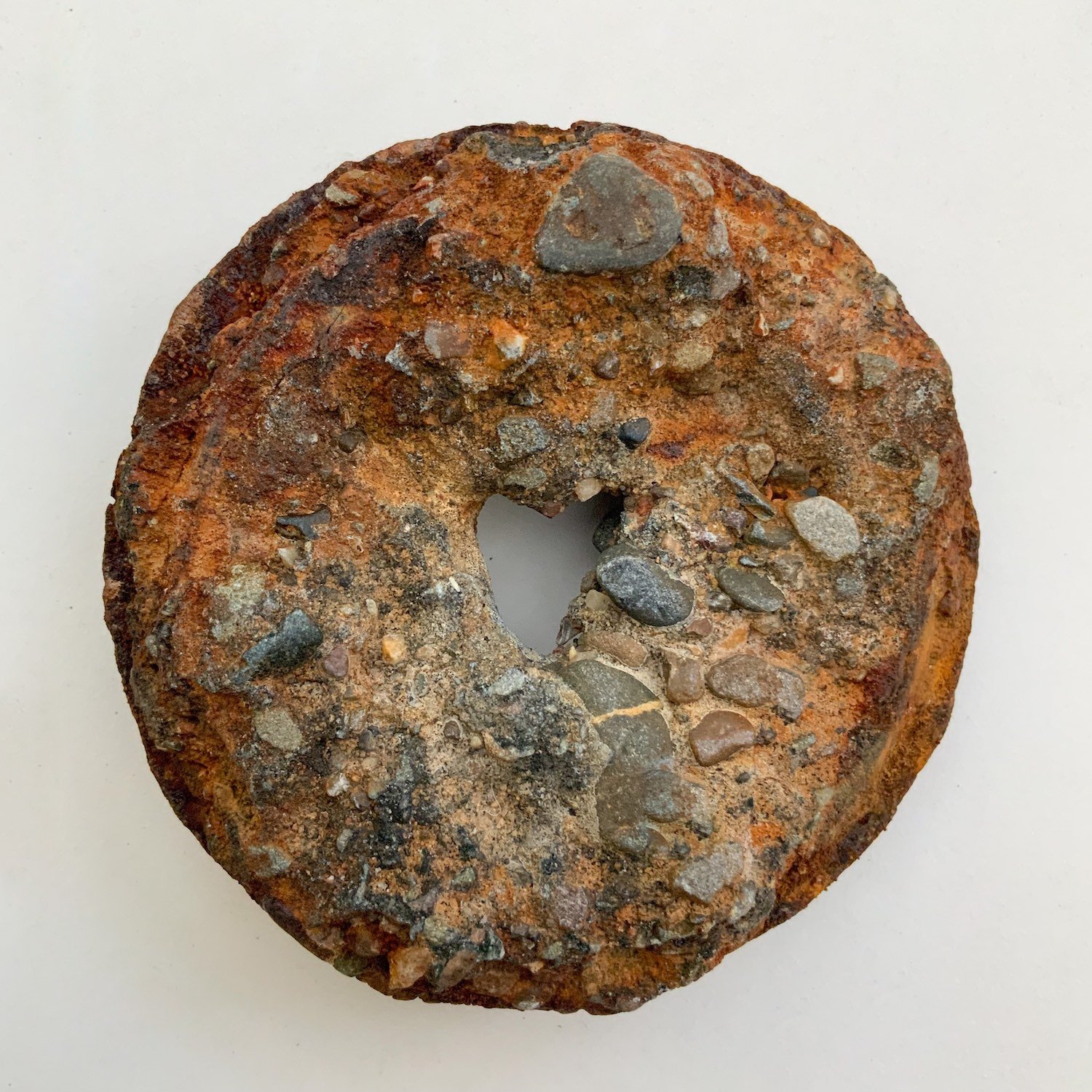Making the Most of your Mosaic Materials
Estimated time to read - under 3 minutes
I am a bit of a hoarder. I am also a bit of a magpie. These two elements are both a blessing and a curse when it comes to creating mosaic art.
When it comes to materials there are just so many things that can be used to create mosaics - I see the potential in lots of different materials, both traditional and non-traditional. As a result I keep hold of lots of things, just in case they come in useful.
For example, look at this fabulous beach find I picked up a couple of years ago, thinking it would look great at the centre of a mosaic. I particularly like the heart shape at the centre. Have I actually used it yet? Sadly, no…
The great things about being a hoarder though, is that I always have lots of different options to choose from when making my artwork. However, there is a downside too. I think I’ve reached the point where my studio has too much stuff in it. I am not the most organised in terms of storing my materials, and it feels like they are taking over a bit - so much so that I sometimes do not have enough space to work productively.
In the past I have done the following
Ordered a product that I needed (fibreglass mesh for making substrates) but to get free postage, spent more than the cost of said postage on other materials that I didn’t actually need.
Bought materials that I had no project in mind for, but liked the look of and thought they would come in handy at some point.
Ordered materials because they were on sale and I find it hard to resist a bargain.
Collected a box of recycled roof slates from a friend, despite the fact I have lots of slate in my garage and no urgent need for more.
Any of these sound familiar?
But while it can be exciting to have new materials and to consider all the possibilities they hold, there is something important to remember…
Having lots of materials does not correspond to being a better artist. It’s how you use what you have that should be your focus.
It’s one of the reasons I started using slate in my mosaics. It was a material that was easily accessible to me, and I set myself a challenge of learning how to use it creatively. I experimented with how to cut it, and how to use it to create different surfaces and effects.
Because the thing is, setting some constraints can actually improve your creativity. Whether that is limiting yourself to one material, to one colour or even to just using all the scraps and offcuts that you can’t bring yourself to throw away ‘in case they come in useful’. You do not need all the materials to create good art.
Instead it can be far more helpful to experiment with what you have and see what can be achieved. Not only can this stretch you creatively, but it can also be good for those on a budget or who have limited access to materials.
Let me illustrate this a bit further. A couple of years ago I set out to create a mosaic using just one thing - a mug. Below you can see the mug I started with and the mosaic I made. I got creative with the way I cut the mug up and then the way I placed the pieces, choosing to use a variety of surfaces and shapes in different areas.
If you are interested in this approach, I’ll be teaching my online course, ’Unlocking the Potential of your Mosaic Materials', in February, where the focus will be on using materials creatively and working with what you have. You can click here to read more about the class.
And if you would like some extra hints and tips for using your materials creatively, I have a PDF available on creating texture in mosaic art, and you can access the PDF here - it’s free!
In the meantime, my resolution for this year is to strictly limit how many new materials I acquire, and instead focus on using the materials I have. I might even organise my studio a bit better so I have more space to work!
This blog post was adapted from one of my weekly emails. If you have enjoyed reading it and would like to receive similar posts direct to your inbox, you can subscribe to my mailing list using the form at the bottom of the page.


